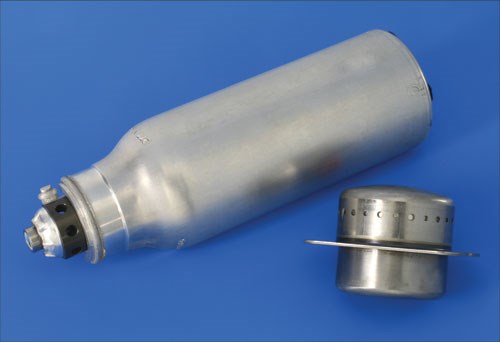The history of airbags is one of promise and technical triumph. First patented in 1951 by German Walter Linderer, his “safety cushion†was inflated by compressed air and activated either by bumper contact or by the driver. Unfortunately, compressed air was insufficient to inflate the cushion.Â
Next came industrial engineer and former U.S. Navy man John Hedrick. His 1953 patent built on Linderer’s idea, but used technology created for the Navy’s compressed air torpedoes. Hedrick coined the term “airbag†to describe the device. Automakers were interested, but none purchased a license to develop and bring it to production.
Â
In 1968, Allen Breed patented the design of the first electromechanical crash sensor, a steel ball held in place inside a tube by a magnet. Sodium azide (a carcinogenic explosive in its natural state, since abandoned) became the first fast-acting propellant, and the combination made it possible to detect a crash and deploy an airbag within the 30 milliseconds needed for it to be effective. Airbags were now feasible. However, it would take many years and many iterations before they reached the level of performance and ubiquity they have achieved today.
Â
“If you look just at our inflator technology,†says Dirk Schultz, Director of Inflatable Restraints Systems Engineering, TRW Automotive (trw.com), “efficiency has improved a lot. First-generation passenger side airbags used to have a tube-type inflator with a diameter up to 75 mm with a length of 250 to 300 mm. Dimensionally, it was about the size of a bottle of Coke.†Often, heavy brackets and retainers were needed to hold it in place.  Today’s airbag uses a small disc-type inflator with a 36-mm diameter and 60 mm height. And, in some applications, the inflator is attached directly to the vehicle’s structure, eliminating the brackets and retainers.
Â
He adds, “Now we have propellants with a significantly higher efficiency that allow you to reduce the dimensions of the package, and we are also working on the geometry of the propellant.†This means pressing the propellant into pellets, and sizing them to meet the inflation need and “steer†gas production. A large pellet has less surface than a powder for the same mass, and the less surface, the slower the burn. “We can adjust the onset of the gas creation,†says Schultz, “to be slow, fast or follow an S-shaped curve depending on the vehicle environment.†That’s because you might want to start with a relatively slow inflation, then increase it as, for example, the engine comes in contact with the object and spikes the crash pulse.
Â
Bag design depends on vehicle size, and larger bags are used in North America than in Europe or Asia. Nevertheless, according to Schultz, each design starts with a construction kit that has a baseline concept pre-developed for all global applications. It starts with a 3D-square bag shape that allows engineers to set the specific requirements in CAD before handing it over for simulation. Next, drawings are created for the production design. “It’s important to have a similar outer dimension for an airbag so that you can plug-and-play in the module housing,†Schultz says. That gives the option of a dual-stage inflator or a single-stage unit with a different vent hole design. “We prefer to have a standard module for a car, and adapt the inflator, propellant, vents, etc. to the requirements of the different markets,†he says.
Â
Once the baseline bag design is set, the team creates a basic folding methodology that allows the engineers to modify the geometry of the bag even though the attachment of the bag and the inflator stay the same. Once the design is finalized, a standard retainer is put on the cushion, and this is placed on top of the inflator before the bag is folded. According to Schultz: “All of the bags for different global regions are based on the same construction. All of them. We tailor the module to specific vehicle needs, and use the construction kits because development times are getting shorter.â€
Â
This does not mean that airbag design is totally plug-and-play or that, conversely, there are no similarities between those used in different parts of the vehicle. “We have a construction kit for all of our modules; front, side, curtain, knee, etc.,†says Schultz. “It works to provide exactly the right protection needed for the different kinds of vehicles, and allows us to be fast. Speed counts.†Speed is good for inflation, but not always for deflation: North American regulations require curtain airbags to protect against rollovers. They are a relative rarity in both Europe and Asia as their road surfaces don’t sit above the surrounding terrain, and the bulk of their fleet has, on average, a lower center of gravity.
Â
Side and curtain airbags don’t use disc inflators because of the packaging requirements. They require a relatively flat inflator with a diameter of 25 to 35 mm and lengths up to 200 mm. Here a stored gas like argon or helium, which is cooler than the pyrotechnic gas used in the driver’s side bag and does not vent as readily through the nylon fabric, is used. Side-impact airbags use a tubular inflator, but with a pyrotechnic propellant due to packaging constraints.Â










